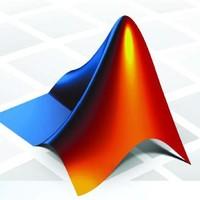Quantum computing is a promising approach of computation that is based on equations from Quantum Mechanics. A simulator for quantum algorithms must be capable of performing heavy mathematical matrix transforms. The design of the simulator itself takes one of three forms: Quantum Turing Machine, Network Model or circuit model of connected gates or, Quantum Programming Language, yet, some simulators are hybrid. We studied previous simulators and then we adopt features from three simulators of different implementation languages, different paradigms, and for different platforms. They are Quantum Computing Language (QCL), QUASI, and Quantum Optics Toolbox for Matlab 5. Our simulator for quantum algorithms takes the form of a package or a programming library for Quantum computing, with a case study showing the ability of using it in the circuit model. The .NET is a promising platform for computing. VB.NET is an easy, high productive programming language with the full power and functionality provided by the .NET framework. It is highly readable, writeable, and flexible language, compared to another language such as C#.NET in many aspects. We adopted VB.NET although its shortage in built-in mathematical complex and matrix operations, compared to Matlab. For implementation, we first built a mathematical core of matrix operations. Then, we built a quantum core which contains: basic qubits and register operations, basic 1D, 2D, and 3D quantum gates, and multi-view visualization of the quantum state, then a window for demos to show you how to use and get the most of the package.
翻译:量子计算是一种有希望的计算方法,它基于量子机械学的方程式。量子算法模拟器必须能够进行重数学矩阵变换。模拟器的设计本身有三种形式之一: 量子图解机、 网络模型或连接门或量子编程语言的电路模型, 然而, 一些模拟器是混合的。 我们研究了先前的模拟器, 然后我们从三个模拟器中采用了不同执行语言、 不同范例和不同平台的模拟器。 它们必须是量子算法语言(QCL) 、 多功能算法模拟器, 和 量子矩阵变换。 我们的量算法模拟器本身设计了三种形式: 量子图解机、 网络模型模型模型模型模型模型模型模型模型模型模型模型模型模型模型模型模型模型模型模型模型模型模型模型模型模型模型模型模型模型模型模型模型模型模型模型模型模型模型模型模型模型模型模型模型模型模型模型模型模型模型模型模型模型模型模型模型模型模型模型模型模型模型模型模型模型模型模型模型模型模型模型模型模型模型模型模型模型模型模型模型模型模型模型模型模型模型模型模型模型模型模型模型模型模型模型模型模型模型模型模型模型模型模型模型模型模型模型模型模型模型模型模型模型模型模型模型模型模型模型模型模型模型模型模型模型模型模型模型模型模型模型模型模型模型模型模型模型模型模型模型模型模型模型模型模型模型模型模型模型模型模型模型模型模型模型模型模型模型模型模型模型模型模型模型模型模型模型模型模型模型模型模型模型模型模型模型模型模型模型模型模型模型模型模型模型模型模型模型模型模型模型模型模型模型模型模型模型模型模型模型模型模型模型模型模型模型模型模型模型模型模型模型模型模型模型模型模型模型模型模型模型模型模型模型模型模型模型模型模型模型模型模型模型模型模型模型模型模型模型模型模型模型模型模型模型模型模型模型模型模型模型模型模型模型模型模型模型模型模型模型模型模型模型模型模型模型模型模型模型模型模型模型模型模型模型模型模型模型模型模型模型模型模型模型模型模型模型模型模型模型模型模型模型模型模型模型模型模型模型模型模型模型模型模型模型模型模型模型模型模型模型模型模型模型模型模型模型模型模型模型模型模型模型模型模型模型模型模型模型模型模型模型模型模型模型模型模型模型模型模型模型模型模型模型模型模型模型模型模型模型





